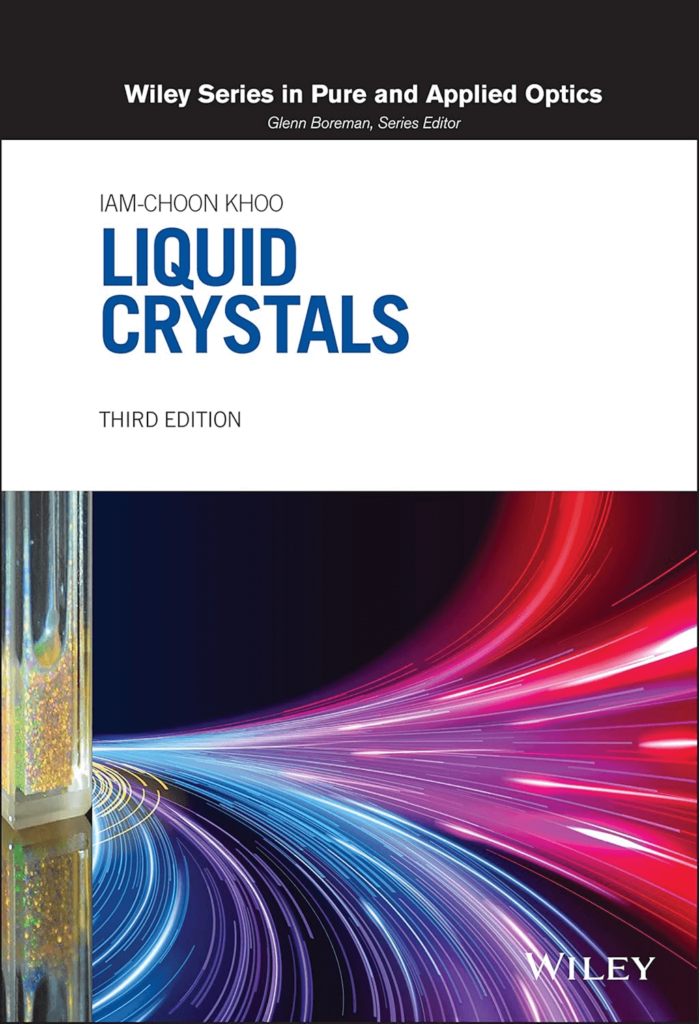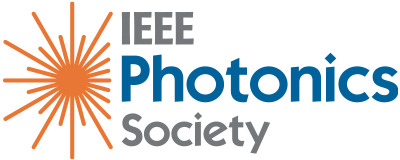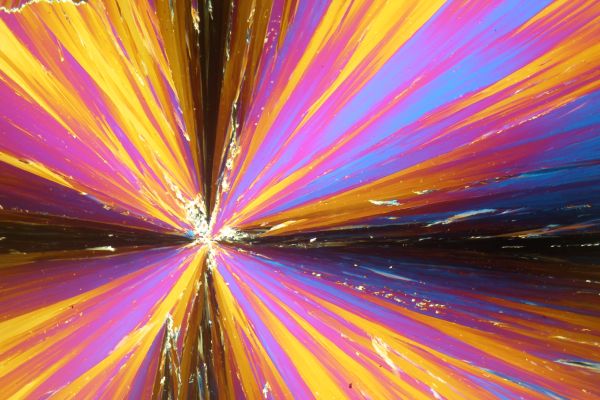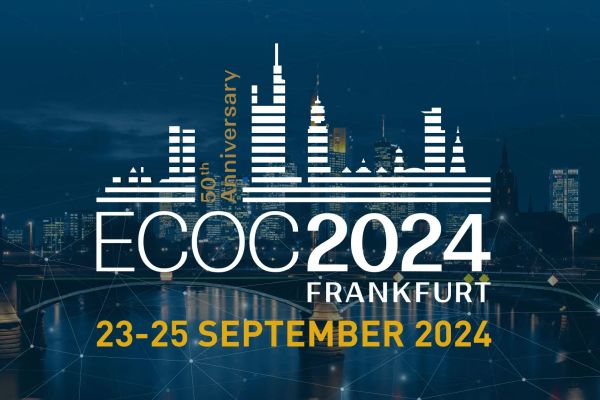Wiley 2022
Reviewed by Ryan Aguinaldo, IEEE Photonics Newsroom Book Reviews Editor

It is often the case in science and technology that things with humble beginnings later come to have profound impact or ubiquity in the world. Such is the case with liquid crystals, which originated as a curiosity to an Austrian botanical chemist who extracted cholesterol derivatives from a carrot almost a century-and-a-half ago. Since then liquid crystals have revolutionized the way we see and interact with the world. These curious materials, existing in a state between solid and liquid, possess properties that have enabled the development of groundbreaking technologies like liquid crystal displays (LCD), which exist as both a humble low-cost display technology and also as the influential leader of the display revolution of the early 21st century. Even today the LCD is still a major contender against competing screen technologies for smartphones and televisions. Even outside of display technology, liquid crystals have found utility in industrial sensors and actuators and advanced optical instruments. It is with this fervor that we welcome several new titles from Wiley that fully cover the science and technology of liquid crystals. This month, we focus on the latest edition of Khoo’s book plainly and aptly titled, Liquid Crystals. Other contributions to the literature will be highlighted in future months.
Khoo’s book is an exceptional resource that comprehensively explores the fascinating world of its namesake. As with previous editions, this meticulously updated and expanded edition delves deep into both fundamental principles and the myriad applications of these unique materials, making it a useful text for students, researchers, and engineers in the field. This third edition brings the book up to date with the latest advancements in liquid crystal research. New topics for this edition includes photonic crystals, metamaterials, ultrafast nonlinear optics, and fabrication techniques for cholesteric and blue-phase liquid crystals.
Liquid Crystals strikes a harmonious balance between theoretical rigor and practical applications. Key ideas are introduced sequentially, fostering a strong foundational understanding. The book’s twelve chapters unfold a logical progression from foundational concepts to advanced topics. Early chapters establish a solid groundwork in liquid crystal fundamentals, while later chapters explore specialized areas such as the nonlinear optics of liquid crystals and device applications. Beyond theoretical discussions, the book also provides valuable insights into experimental techniques for characterizing liquid crystal properties and fabricating devices, offering practical guidance for laboratory work.
While this book is certainly written by an optical scientist for optical scientists, the first four chapters offer a panoramic view of the materials science of liquid crystals, focusing on their chemical, mechanical, and thermodynamic properties, while not shying away from and indeed making connection with in-the-moment pertinent optical topics. Here, a vast landscape is covered ranging from molecular structures and chemical compositions to order parameters, phase transitions, and free energies. The various mesophases—nematic, cholesteric, smectic—are fully discussed with their specific optical properties along with some ferroelectric attributes.
The remaining eight chapters then give a comprehensive treatment of the optical properties and photonic applications of liquid crystals. Fundamental optical properties are first discussed, including the birefringence that comes about due to the anisotropic nature of liquid crystals and applications thereof to various electro-optic devices, such as LCDs, where the applied electric field modulates the birefringence and controls light transmission. Such birefringence comes about due to the anisotropy inherent in liquid crystals. On this point, Khoo discusses various theoretical approaches for describing light propagation in anisotropic media, including Jones’ matrix method, the 4×4 matrix method, and a brief summary of the finite-difference time-domain (FDTD) numerical technique.
Various light scattering mechanisms are also discussed, including both linear and nonlinear modes, where linear scattering provides insights into the material properties of the liquid crystal, while nonlinear scattering leads to phenomena like self-focusing and stimulated scattering. Detailed discussion of Raman and Brillouin scattering is also included along with discussion of the valuable information that these scattering mechanisms yield about the molecular structure and dynamics of liquid crystals.
The book shines a spotlight on the nonlinear optics of liquid crystals, covering a vast array of nonlinear optical processes and their applications. No less than five chapters are directly devoted to various aspects of this topic. Specific to liquid crystals is that intense light can reorient the liquid crystal’s director axis, leading to optical nonlinearities. The familiar interaction of light with the electronic structure of materials is also important in liquid crystals, giving rise to ultrafast nonlinear responses, including nonlinear refraction and self-focusing, nonlinear absorption, harmonic generation, and wave mixing. Absorption of intense light can lead to changes in temperature, density, and lattice structure of liquid crystals, resulting in other nonlinear responses. While these effects are generally slower than electronic nonlinearities, they can still be significant for continuous-wave or long-pulse lasers.
Intimately related to the origins of optical nonlinearity in materials, Khoo also provides a detailed quantum mechanical treatment describing the electric susceptibility of liquid crystals. This approach provides a profound understanding of the underlying physics governing their behavior and facilitates a rigorous analysis of light-matter interactions. The use of the density matrix formalism is detailed for describing optically induced molecular electronic polarizabilities. This formalism is used to calculate linear and nonlinear susceptibilities. The text also discusses the origins of linear and nonlinear absorption from the imaginary part of the susceptibility. Furthermore, the text touches on the significance of molecular structure and symmetry in determining the electronic optical nonlinearities of liquid crystals. It also mentions the role of permanent dipoles, molecular ordering, and quadrupole contributions in the nonlinear optical response.
Overall, Khoo’s latest edition, like its predecessors, is an excellent reference for those interested in the optics of liquid crystals. Its updated topics will aid in equipping its readers with the knowledge to explore the field’s frontiers.




